SFX
by Martin Willey
Multiple exposures were discovered shortly after the invention of photography. The film is exposed once, then rewound and exposed again, capturing both images are captured together. If one image overlaps the other, they seem transparent. If they are against a plain black background (like space), it is a simple way to avoid compositing multiple images together, which using traditional non-digital techniques always resulted in reduced image quality.
Other techniques for combining different filmed elements include using mattes, rear projection, optical compositing and blue-screen (or green-screen) compositing.
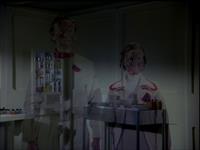
The Lambda Factor. Most "ghost" shots use double-exposures, shooting with a static camera against an Alphan wall.
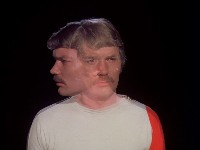
Another Time, Another Place. The actors are filmed mostly static against a black background. The film is rewound and the actor is filmed again, this time either the actor or the camera moves.
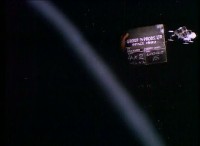
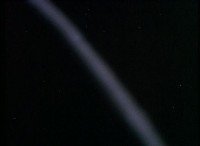
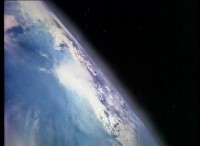
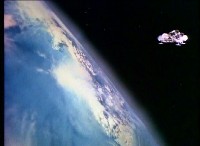
Most space scenes were multiple exposures. Here the different elements, all filmed separately, were the planet (an airbrushed painting), the atmosphere on the horizon, the Eagle, and a few stars. By filming each separately, the camera keeps each element in focus and correctly lit. Here the Eagle moves across the frame, but the model doesn't move, the camera is moving.
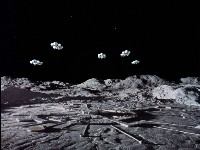
Guardian Of Piri, Eagles rising from Moonbase Alpha; this shot was repeated in four other episodes. Each of the five Eagles is the same model (probably the 11 inch), filmed in separate exposures; the stars and the Moonbase are additional exposures.
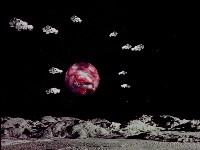
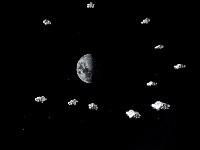
Guardian Of Piri used the same technique for several ambitious shots; in these the same Eagle is filmed 11 times, plus planet, stars and lunar surface.
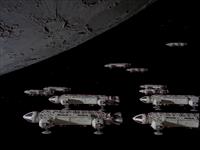
Brian The Brain (and The A B Chrysalis), eleven Eagles in space by the Moon. The Moon and stars are filmed separately, while the Eagles are filmed in at least 4 different exposures. The third 44 inch Eagle appears twice at the bottom of the frame, with the first 44 inch Eagle alongside it. The smaller Eagles are probably two 11 inch Eagles, the lowest ones may be forced perspective, the higher pair and single Eagle upper right as separate exposures.
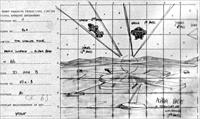
These multiple exposures were designed using a grid. The grid is 8 x 8, with the centre being A1. The camera operator would use the same grid over the camera viewfinder to position the 4 elements- the Eagle (filmed twice), the Moonbase and the stars. See more SFX grids
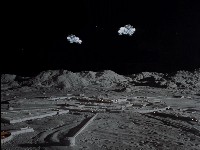
A very similar scene from year 1 episode 11 The Last Sunset with two Eagles descending over Alpha (scene 26A, filmed end July 1974). The grid above is probably a mock-up, drawn for "The Making of Space: 1999" (episode and scene numbers don't match actual scripts, and the date of 21st July 1975 was between year 1 and 2). The grid was probably based on the original grid for this shot, or a similar one.
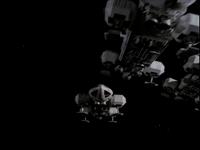
Sometimes the positioning was wrong, and two spaceships overlapped, as in this shot from The Dorcons
Copyright Martin Willey